Related Research Articles

Tibet is a region in Asia, covering much of the Tibetan Plateau and spanning about 2,500,000 km2 (970,000 sq mi). It is the homeland of the Tibetan people. Also resident on the plateau are some other ethnic groups such as the Monpa, Tamang, Qiang, Sherpa and Lhoba peoples and, since the 20th century, considerable numbers of Han Chinese and Hui settlers. Since the 1951 annexation of Tibet by the People's Republic of China, the entire plateau has been under the administration of the People's Republic of China. Tibet is divided administratively into the Tibet Autonomous Region, and parts of the Qinghai and Sichuan provinces. Tibet is also constitutionally claimed by the Republic of China (Taiwan) as the Tibet Area since 1912.
Shangri-La is a fictional place in Asia's Kunlun Mountains (昆仑山), described in the 1933 novel Lost Horizon by English author James Hilton. Hilton portrays Shangri-La as a mystical, harmonious valley, gently guided from a lamasery, enclosed in the western end of the Kunlun Mountains. Shangri-La has become synonymous with any earthly paradise, particularly a mythical Himalayan utopia – an enduringly happy land, isolated from the world. In the novel, the people who live in Shangri-La are almost immortal, living hundreds of years beyond the normal lifespan and only very slowly aging in appearance.

The University of Wisconsin–Milwaukee is a public urban research university in Milwaukee, Wisconsin. It is the largest university in the Milwaukee metropolitan area and a member of the University of Wisconsin System. It is also one of the two doctoral degree-granting public universities and the second largest university in Wisconsin.

The UW–Milwaukee Panther Arena is an indoor arena located in Milwaukee, Wisconsin. The arena, which seats as many as 12,700 people and offers 41,700 square feet (3,874 m2) of floor space, is part of a larger downtown campus, that includes the Milwaukee Theatre and Wisconsin Center.

Ngawang Lobsang Thupten Gyatso Jigdral Chokley Namgyal, abbreviated to Thubten Gyatso was the 13th Dalai Lama of Tibet, enthroned during a turbulent era and the collapse of the Qing Empire. Referred to as "the Great Thirteenth", he is also known for redeclaring Tibet's national independence, and for his reform and modernization initiatives.
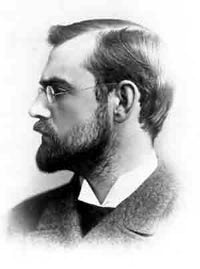
Archer Milton Huntington was an American philanthropist and scholar, primarily known for his contributions to the field of Hispanic studies. He founded The Hispanic Society of America in New York City, and made numerous contributions to the American Geographical Society.

The British expedition to Tibet, also known as the Younghusband expedition, began in December 1903 and lasted until September 1904. The expedition was effectively a temporary invasion by British Indian Armed Forces under the auspices of the Tibet Frontier Commission, whose purported mission was to establish diplomatic relations and resolve the dispute over the border between Tibet and Sikkim. In the nineteenth century, the British had conquered Burma and Sikkim, with the whole southern flank of Tibet coming under the control of the British Indian Empire. Tibet ruled by the Dalai Lama under the Ganden Phodrang government was a Himalayan state under the suzerainty of the Chinese Qing dynasty until the 1911 Revolution, after which a period of de facto Tibetan independence (1912–1951) followed.
Stuart Carlson was an American editorial cartoonist who worked for the Milwaukee Journal Sentinel. His cartoons usually followed the moderate editorial stance of that paper.
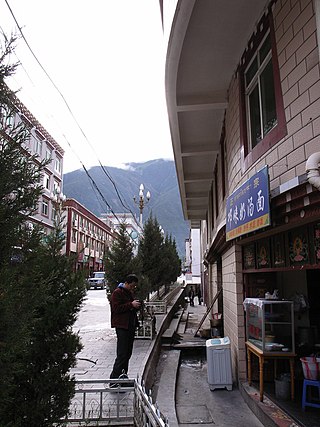
Batang Town, or Xiaqiong Town, is a town in Batang County, Garzê Tibetan Autonomous Prefecture, Sichuan Province, in the China on the main route between Chengdu and Lhasa, Tibet, and just east of the Jinsha River, or Upper Yangtze River. It is at an elevation of 2,700 metres.
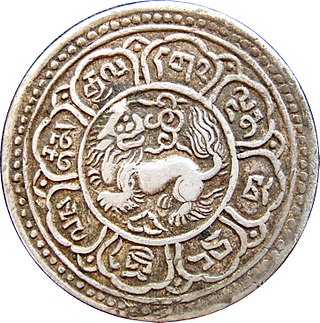
The use of historical money in Tibet started in ancient times, when Tibet had no coined currency of its own. Bartering was common, gold was a medium of exchange, and shell money and stone beads were used for very small purchases. A few coins from other countries were also occasionally in use.
The Milwaukee LGBT Film & Video Festival takes place every fall in Milwaukee, Wisconsin. The festival was established in 1987 and is presented by the Film Department in the Peck School of the Arts of the University of Wisconsin–Milwaukee (UWM). Opening night and centerpiece gala screenings take place at the Oriental Theatre located on the East Side of Milwaukee. In 2018 the format of the festival changed to provide screenings throughout the year instead of the concentrated 11 day format primarily screened at the UW Milwaukee Union Theatre.

John S. Conway, an artist and sculptor, was born February 21, 1852, in Dayton, Ohio. His middle name is listed differently in different sources as Severinus, Severine and Severino. He received his artistic training at the Art Institute of Chicago, the Ecole Julien, and at the École des Beaux-Arts. Conway also lived in Milwaukee, Italy, and New Jersey.

The Sino-Tibetan War, or Second Sino-Tibetan War, was a war that began in May and June 1930 when the Tibetan Army under the 13th Dalai Lama invaded the Chinese-administered eastern Kham region, and the Yushu region in Qinghai, in a struggle over control and corvee labor in the Dajin Monastery; the Tibetan army -with the support of the UK- defeated easily the Sichuan army who was focused in internal fights. Ma clique warlord Ma Bufang secretly sent a telegram to Sichuan warlord Liu Wenhui and the leader of the Republic of China, Chiang Kai-shek, suggesting a joint attack on the Tibetan forces. The Republic of China defeated the Tibetan armies, and recaptured lost territory.
The Qinghai–Tibet War or the Tsinghai–Tibet War was a conflict that took place during the Sino-Tibetan War. A rebellion led by the Dalai Lama with British support wanted to expand the original conflict taking place between the Tibetan Army and Liu Wenhui in Xikang, to attack Qinghai, a region northeast of Tibet. Using a dispute over a monastery in Yushu in Qinghai as an excuse in 1932, the Tibetan army attacked. Qinghai Muslim General Ma Bufang overran the Tibetan armies and recaptured several counties in Xikang province. Shiqu, Dege and other counties were seized from the Tibetans. The war against the Tibetan army was led by the Muslim General Ma Biao. The Tibetans were pushed back to the other side of the Jinsha river. The Qinghai army recaptured counties that had been controlled by the Tibetan army since 1919. The victory on the part of the Qinghai army threatened the supply lines to Tibetan forces in Garze and Xinlong. As a result, this part of the Tibetan army was forced to withdraw. Ma and Liu warned Tibetan officials not to dare cross the Jinsha river again. By August the Tibetans lost so much territory to Liu Wenhui and Ma Bufang's forces that the Dalai Lama telegraphed the British government of India for assistance. British pressure led China to declare a cease-fire. Separate truces were signed by Ma and Liu with the Tibetans in 1933, ending the fighting. The British had backed up the Tibetans during the war. After their war the victory over the Tibetans was celebrated by Xikang and Qinghai soldiers.
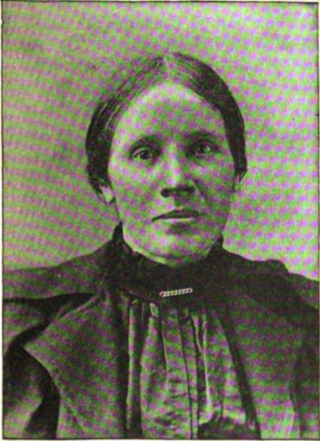
Hannah Royle Taylor, known as Annie Royle Taylor, was an English explorer and Evangelical missionary to Tibet. She was the first Western woman known to have visited Tibet. She attempted to reach the "forbidden" city of Lhasa in 1892–1893.
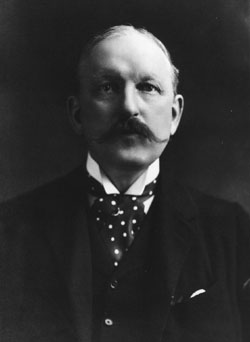
William Woodville Rockhill was a United States diplomat, best known as the author of the U.S.'s Open Door Policy for China, the first American to learn to speak Tibetan, and one of the West's leading experts on the modern political history of China.
The University of Wisconsin–Milwaukee Libraries Digital Collections was established in 2001 to provide remote (online) access to the library's unique resources. It serves the University of Wisconsin–Milwaukee academic community as well as the general public.
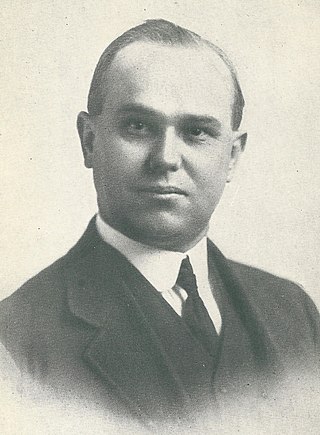
Albert Leroy Shelton (1875-1922) was an American medical doctor and a Protestant missionary in Tibet, especially in Batang in the Kham region of eastern Tibet, from 1903 until 1922. He authored a popular book about his experiences and collected Tibetan cultural items and sold them to museums. He was shot and killed by brigands in 1922 while traveling by mule near Batang.

Santos Ision Jackson Zingale (1908–1999) was an American artist known for his regionalist and social realist paintings.
The Kosciusko Reds were a minor league baseball team based in Milwaukee, Wisconsin. Representing the Polish south side of Milwaukee, the Kosciusko Reds played as a semi–pro team for many years before playing as members of the Independent Wisconsin State League from 1928 to 1930. The Milwaukee Red Sox continued as members of the Wisconsin State League in 1931 and 1936 and the 1932 Wisconsin-Illinois League. The Reds and Red Sox teams hosted home minor league games at Borchert Field.
References
- ↑ "Forman, Harrison, 1904-1978. NWDA ( 1904 - 1978)". virginia.edu. Archived from the original on 2015-04-09.
- ↑ Hong Kong (China), Harrison and Sandra Forman's daughter Brenda Lu; University of Wisconsin--Milwaukee digital collections; accessed 2016-09-01
- ↑ Forman, Brenda-Lu Is Your name John?. New York: A. Frommer, 1964
- ↑ "Travel Diaries and Scrapbooks of Harrison Forman 1932 - 1973". uwm.edu.
- ↑ "Guide to the Harrison Forman Papers 1931-1974". orbiscascade.org.
- ↑ Harrison Forman Collection Archived 2015-08-28 at the Wayback Machine The Harrison Forman Photo Collection contains over 3,800 prints and over 300 negatives... sized at 98,000 images
- ↑ "Through Forbidden Tibet - Narration". collections.lib.uwm.edu.
- ↑ "Harrison Forman". IMDb.